Introduction
In today’s business environment, where financial accuracy, employee satisfaction, and regulatory compliance are closely intertwined, organisations are reevaluating how they manage payroll. One area gaining critical focus is the payroll management process.
But what exactly is the payroll management process? Why is it more than just calculating salaries and issuing paychecks? And most importantly, how can streamlining it save time, reduce risk, and improve employee trust?
In this blog, we’ll break down the payroll management process in clear, actionable steps. You’ll learn what it involves, why it matters, the best practices to follow, and how to build a system that ensures compliance while keeping employees happy.
Let’s get started.
TL;DR
- Streamlining your payroll management process ensures timely, accurate salary disbursement and strengthens employee trust and satisfaction.
- Automating attendance tracking, payroll calculations, and tax filings reduces errors and boosts compliance across all business sectors.
- Choosing the right payroll method, manual, software-based, or outsourced, depends on your business size, complexity, and compliance needs.
- Common challenges like tax law changes, data errors, and inconsistent systems can be avoided with centralized, cloud-based payroll solutions.
- Adopting best practices such as regular audits, direct deposits, and real-time reporting supports scalability and financial transparency.
Understanding the Payroll Management Process
The payroll management process ensures accurate calculation and timely distribution of employee salaries, taxes, and benefits. It involves gathering attendance data, calculating gross and net pay, complying with tax regulations, and maintaining payroll records. Efficient payroll systems reduce errors, ensure legal compliance, and boost employee satisfaction by providing transparency and reliability in compensation.
Below are the key components that shape a reliable payroll management process:
- Employee Information Management: Capturing essential employee details such as job role, salary structure, tax declarations, and bank information, common in all sectors from manufacturing to tech.
- Attendance & Leave Tracking: Integrating attendance records, shift schedules, and leave balances into payroll calculations is widely practised in retail, healthcare, and education.
- Salary Calculation & Disbursement: Accurate computation of gross pay, deductions, and net pay, followed by timely bank transfers and payslip generation, is vital for the finance and BPO sectors.
- Statutory Compliance: Managing deductions for Provident Fund (PF), Employee State Insurance (ESI), Professional Tax, and Income Tax, especially critical in highly regulated sectors like BFSI and logistics.
- Reporting & Documentation: Generating reports for audits, tax filings, and internal reviews to ensure transparency and accountability, used heavily in IT, consulting, and public sector units.
- Post-Payroll Activities: This includes TDS filings, Form 16 generation, year-end summaries, and final settlements, which are particularly important during business scaling or mergers and acquisitions (M&A) activities.
Partner with TeamLease today to streamline your payroll management process and ensure accurate, compliant, and timely employee payments.
Steps in the Payroll Management Process
A well-organised payroll process ensures employees are paid accurately and on time, while helping businesses stay compliant with financial and legal obligations. Each step, from gathering employee data to tax filing, must be executed with precision to maintain trust and efficiency.
Let’s break down the key steps that make up an effective payroll management process:
1. Employee Information Collection
- Gather Employee Data: Collect essential details, including employee ID, job title, salary structure, tax declarations, bank account information, and statutory IDs (PAN, Aadhaar, UAN).
- Verify and Store Securely: Ensure data accuracy by verifying the submitted documents. Utilise digital HRMS platforms to securely store records, particularly in industries that handle sensitive information, such as healthcare and finance.
2. Time Tracking and Attendance
- Implement Reliable Attendance Systems: Utilize biometric systems, swipe cards, or cloud-based time tracking tools to monitor work hours and shift timings accurately.
- Incorporate Leave and Absence Data: Integrate sick leaves, paid time off, and holiday schedules into the payroll cycle. Organisations in education and healthcare often automate this to reduce manual errors.
3. Payroll Calculation
- Calculate Gross Pay: Determine total earnings, including base salary, bonuses, overtime, and incentives, which are common in sectors such as IT services and sales-driven industries.
- Apply Deductions and Compute Net Pay: Factor in statutory deductions (PF, ESI, TDS), voluntary deductions (loans, advances), and finalise the take-home pay. This is a regulatory necessity in BFSI and government organisations.
4. Payroll Approval
- Set Internal Controls for Review: Have HR or payroll managers review calculations and exceptions before processing, especially critical in multi-location enterprises and compliance-heavy sectors, such as the pharmaceutical industry.
- Involve Departmental Heads When Needed: For incentive-linked or project-based pay, route approvals through respective managers, as is done in consulting and project-driven industries.
5. Payment Distribution
- Disburse via Bank Transfer or Payroll Software: Use direct deposit methods or payroll integration with banking systems to ensure timely salary credit. This is the norm in IT, BPOs, and large corporates.
- Generate Payslips and Notify Employees: Provide digital or printed payslips with detailed breakdowns to promote transparency, a widely practiced approach in manufacturing, retail, and startups.
6. Tax Filing and Compliance
- Deduct and Deposit Statutory Contributions: Ensure timely submission of EPF, ESI, TDS, and professional tax to government portals, critical for compliance in all regulated industries.
- Generate and File Returns: File monthly/quarterly statutory returns and issue Form 16 to employees. This is particularly essential in sectors such as BFSI, telecom, and export businesses, where compliance audits are frequent.
7. Post-Payroll Recordkeeping and Reporting
- Maintain Detailed Payroll Records: Store monthly salary registers, tax filings, and audit trails digitally for easy retrieval, a practice common in organisations preparing for ISO audits or due diligence.
- Generate Insightful Reports: Create reports on payroll expenses, compliance status, and headcount trends to inform leadership, especially valuable in enterprises managing large distributed workforces.
With a clear understanding of the payroll process steps, it’s equally important to explore the different methods available to manage them efficiently.
Methods of Payroll Management
Choosing the proper payroll management method depends on the size of your business, budget, and compliance needs. According to data from a leading industry review, businesses using payroll software experience 31% fewer errors compared to manual processes
Below are the most common payroll management methods used across industries:
1. Manual Payroll Processing
- Suitable for Small Teams: Manual payroll typically involves spreadsheets or physical records and is often used by microbusinesses or startups with fewer than 10 employees.
- High Risk of Errors: While low-cost, it’s prone to miscalculations, missed deadlines, and compliance mistakes, especially risky in regulated sectors like finance and healthcare.
- Time-Consuming and Difficult to Scale: As headcount grows, managing payroll manually becomes inefficient, increasing the administrative burden and often prompting a shift to software or outsourcing.
2. Payroll Management Software
- Automates Core Payroll Tasks: Payroll software calculates salaries, taxes, and deductions, generates payslips, and even integrates with time tracking systems. It’s widely adopted in IT, education, and service-based industries.
- Ensures Accuracy and Compliance: Features like automated tax updates, statutory filings, and reporting dashboards minimise human error, making it ideal for mid-sized and growing businesses.
- Scalable and Cloud-Ready: Most platforms offer cloud access, employee self-service portals, and integration with ERP systems, which is particularly helpful for multi-location companies or remote teams.
3. Outsourcing Payroll Services
- Transfers Payroll Responsibility to Experts: Businesses can engage third-party vendors to handle end-to-end payroll, from calculation and disbursement to tax filings and reporting. Common in BPOs, NGOs, and international firms.
- Reduces Compliance Risk and Saves Time: External providers stay updated on regulatory changes, ensure timely filings, and reduce the internal burden on HR and finance teams.
- Requires Careful Vendor Selection: Businesses must vet providers for data security, responsiveness, and service scope. Contract clarity is critical, especially when managing employee data in sensitive sectors like healthcare and BFSI.
Next, let’s examine some best practices that help businesses across industries manage it more effectively.
Best Practices for Effective Payroll Management
Effective payroll management not only ensures employees are paid correctly and on time, it also helps businesses avoid penalties, improve transparency, and build trust. Adopting best practices is essential for maintaining compliance and efficiency as your company scales.
Below are some key payroll management best practices widely used across industries:
- Centralise Employee Data Digitally: Use cloud-based HRMS platforms to store employee details, contracts, and tax documents, a common approach in SaaS companies and remote-first startups.
- Automate Time Tracking and Leave Management: Implement biometric systems or time-tracking tools that are integrated with payroll software, which is particularly useful in industries such as retail, manufacturing, and logistics.
- Regularly Audit Payroll Processes: Conduct quarterly audits to identify discrepancies and compliance gaps, which are particularly critical in sectors such as BFSI and healthcare, where regulations are stringent.
- Stay Updated on Tax Laws and Labour Regulations: Subscribe to official updates or partner with compliance advisors, a must for companies operating in multiple states or countries.
- Schedule Payroll Calendar in Advance: Define clear-cut-off dates for attendance, approvals, and salary releases, which helps avoid delays, a standard practice in education institutions and public sector firms.
- Use Direct Deposit for Faster Payments: Transfer salaries directly to employee bank accounts to ensure timely and secure payments, a common practice in the tech, BPO, and corporate sectors.
- Train Payroll Staff and Ensure Role-Based Access: Regular training on software and compliance, paired with controlled access, helps protect sensitive data, especially in finance and HR-intensive organizations.
TeamLease can help you automate your payroll processes, reduce manual errors, and save valuable HR time. Start your transformation today.
Now, let’s explore the real-world challenges companies often face during payroll management.
Common Challenges in Payroll Management
Despite technological advances, payroll management continues to face several recurring challenges that can affect accuracy, compliance, and employee trust. Identifying these pain points early can help businesses take preventive action.
Below are some of the most common payroll management challenges across industries:
- Incorrect Data Entry and Human Error: Manual inputs often lead to salary miscalculations or tax errors, particularly in smaller retail and service-based businesses that use spreadsheets for payroll management.
- Frequent Changes in Tax Laws: Staying compliant with evolving federal, state, and international regulations is particularly challenging for multi-location companies in the BFSI and logistics sectors, given the frequent changes in tax laws.
- Complex Benefits and Deductions: Managing variable benefits, such as bonuses, reimbursements, or shift differentials, can be challenging for the manufacturing and healthcare sectors.
- Handling Contract and Gig Workers: Payroll complexity increases when onboarding freelancers or consultants with varied pay structures, common in IT, media, and design agencies.
- Integration Gaps Between Systems: The lack of synchronization between attendance tools, HR software, and accounting systems often leads to delays, especially in mid-sized firms that are scaling rapidly.
- Missed Deadlines and Delayed Payments: Inconsistent payroll cycles can harm employee morale and lead to penalties, a common challenge faced by startups and seasonal businesses.
- Data Security and Confidentiality Risks: Payroll involves sensitive information, making it a target for breaches. Security is a key concern in finance, education, and government sectors.
- Lack of Payroll Expertise: Many small businesses rely on untrained staff or outdated processes, which leads to compliance issues and misreporting.
Now, let’s move on to how you can select a payroll system that ensures accuracy and compliance.
Selecting the Right Payroll Management Solution
Choosing the right payroll management system is crucial for ensuring accuracy, efficiency, and compliance, especially as your workforce grows or becomes more diverse. Notably, 74% of companies are using or planning to implement cloud-based payroll solutions, reflecting a widespread shift toward modern, scalable systems.
Below are key factors to consider when selecting the right payroll solution:
- Evaluate Business Size and Complexity: Small businesses may benefit from basic software with simple interfaces, while larger enterprises require scalable platforms with advanced automation capabilities.
- Check for Compliance Capabilities: Ensure the system stays updated with local and global tax regulations, critical for companies operating across multiple states or countries, such as those in the IT and consulting industries.
- Look for Integration with Existing Tools: Select a solution that seamlessly integrates with your HR, time-tracking, and accounting systems to minimize duplication and manual work.
- Consider Support for Multiple Pay Structures: Ensure the system can handle payrolls for hourly, salaried, freelance, and contract workers, common in the education, hospitality, and creative sectors.
- Review User-Friendliness and Accessibility: Cloud-based, mobile-friendly platforms are ideal for remote or field-based teams, particularly in logistics and retail.
- Check for Reporting and Analytics Features: Tools that offer detailed payroll summaries, tax reports, and audit trails help in financial planning and compliance tracking.
- Assess Vendor Support and Reliability: Look for providers with strong customer service, comprehensive training resources, and robust data security features, essential for the BFSI and healthcare sectors.
Ready to move away from outdated manual payroll? Let TeamLease guide your switch to a reliable, digital payroll platform built for growth.
With the key steps and methods covered, let’s explore why centralizing your payroll management can bring lasting value to your organization.
Benefits of a Centralized Payroll Management System
Centralizing payroll management streamlines processes, reduces errors, and enhances compliance by consolidating all payroll-related activities into a single system. This approach is increasingly favored by organizations aiming for efficiency and transparency.
Below are some key benefits of adopting a centralized payroll management system:
- Improved Accuracy and Consistency: Centralized data entry and calculations minimize errors, which is vital for sectors like manufacturing and finance with complex payroll needs.
- Faster Payroll Processing: Automating workflows speeds up salary disbursements and reduces administrative overhead, benefiting fast-paced industries such as retail and IT services.
- Simplified Compliance Management: A single system helps track tax updates and regulatory requirements across regions, essential for multinational corporations and BFSI companies.
- Enhanced Data Security: Central systems often feature robust access controls and encryption, safeguarding sensitive employee information, particularly in the healthcare and government sectors.
- Better Reporting and Analytics: Consolidated data enables comprehensive payroll reports, helping HR and finance teams make informed decisions in education and consulting firms.
- Cost Savings Through Efficiency: Reducing manual tasks lowers operational costs and minimizes the need for extensive payroll teams, ideal for startups and SMEs.
- Consistent Employee Experience: Employees receive uniform payslips and timely updates regardless of location, supporting companies with remote or hybrid workforces.
Effective payroll management is vital for any organization’s success, encompassing key steps such as accurate employee data collection, precise payroll calculations, timely payment distribution, and strict adherence to compliance.
Streamlined payroll processes not only save time and reduce costs but also build trust and transparency within the workforce. Investing in the right payroll management approach ultimately supports organizational growth and creates a positive work environment where both employees and the business grow.
If your organization is ready to simplify and strengthen its payroll processes, TeamLease is your trusted partner in making it happen. Backed by deep expertise in workforce and compliance management, TeamLease specializes in designing and executing payroll solutions that align with your operational goals and employee expectations, ensuring accuracy, efficiency, and long-term scalability.
Choosing established providers, such as Team Lease, can ensure compliance and industry-specific expertise, thereby facilitating a smoother transition.
FAQs
1. What is the payroll management process?
The payroll management process involves collecting employee data, tracking time and attendance, calculating salaries and deductions, distributing payments, and ensuring tax compliance, all to manage employee compensation accurately and efficiently.
2. Can small businesses manage payroll without specialized software?
Yes, small businesses can initially manage payroll manually using spreadsheets or basic accounting software. However, as the organization grows and payroll complexity increases, manual methods can lead to errors and inefficiencies.
3. How do companies ensure payroll compliance?
Companies ensure payroll compliance by staying updated with changing tax laws, labor regulations, and reporting requirements. Utilizing automated payroll systems helps by incorporating the latest legal updates, generating accurate tax filings, and maintaining comprehensive records.
4. What are common challenges in payroll management?
Payroll management can face challenges such as data entry errors, miscalculations of taxes and benefits, and delays in payment processing. Industries such as retail and manufacturing, which often experience high employee turnover and complex shift patterns, frequently encounter these issues.
5. How often should payroll processes be reviewed or updated?
Payroll processes should be reviewed at least annually, or whenever there are significant changes in tax laws, labor policies, or the company’s structure. Frequent reviews help identify inefficiencies, adapt to regulatory updates, and incorporate employee feedback.







